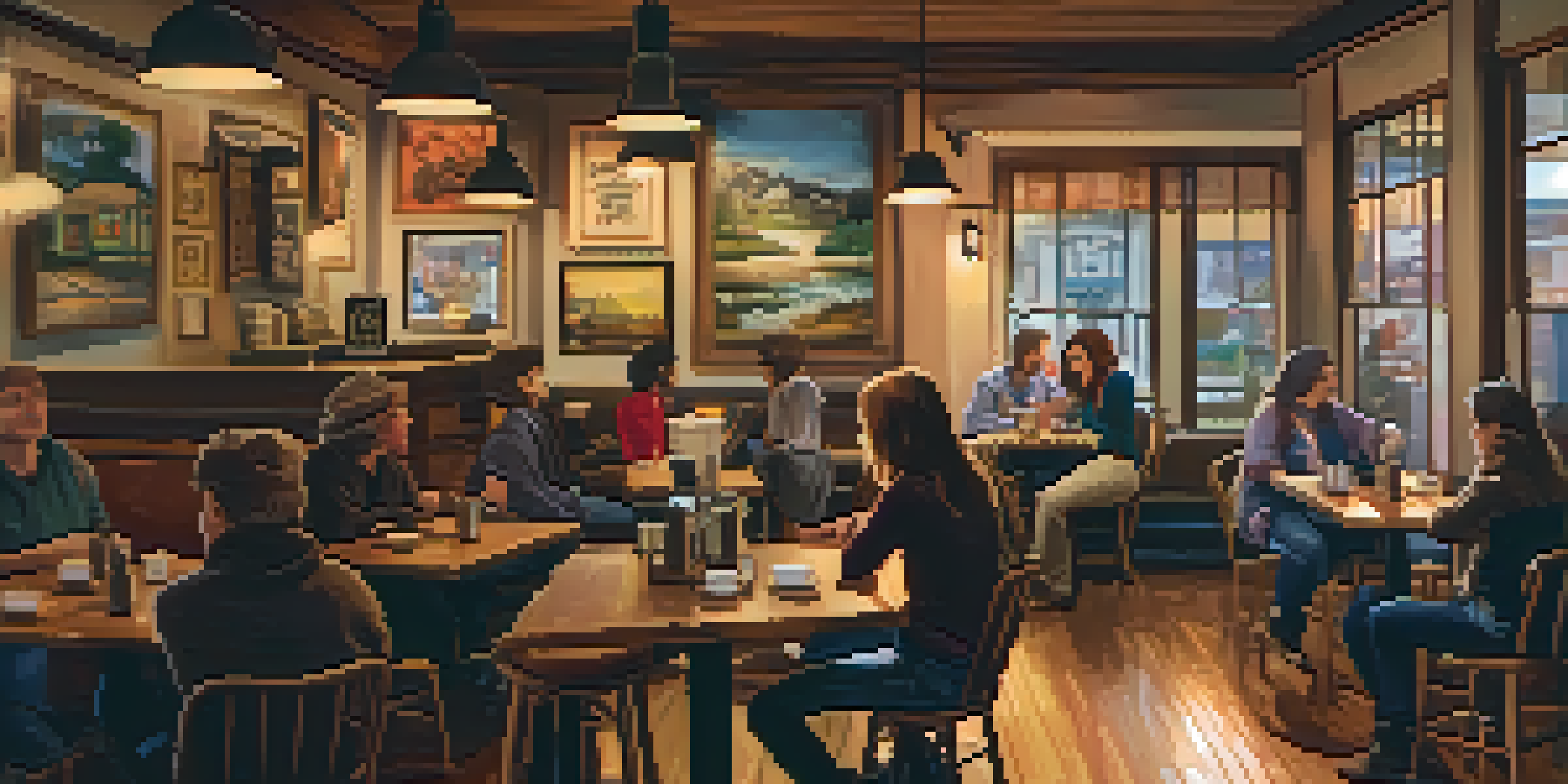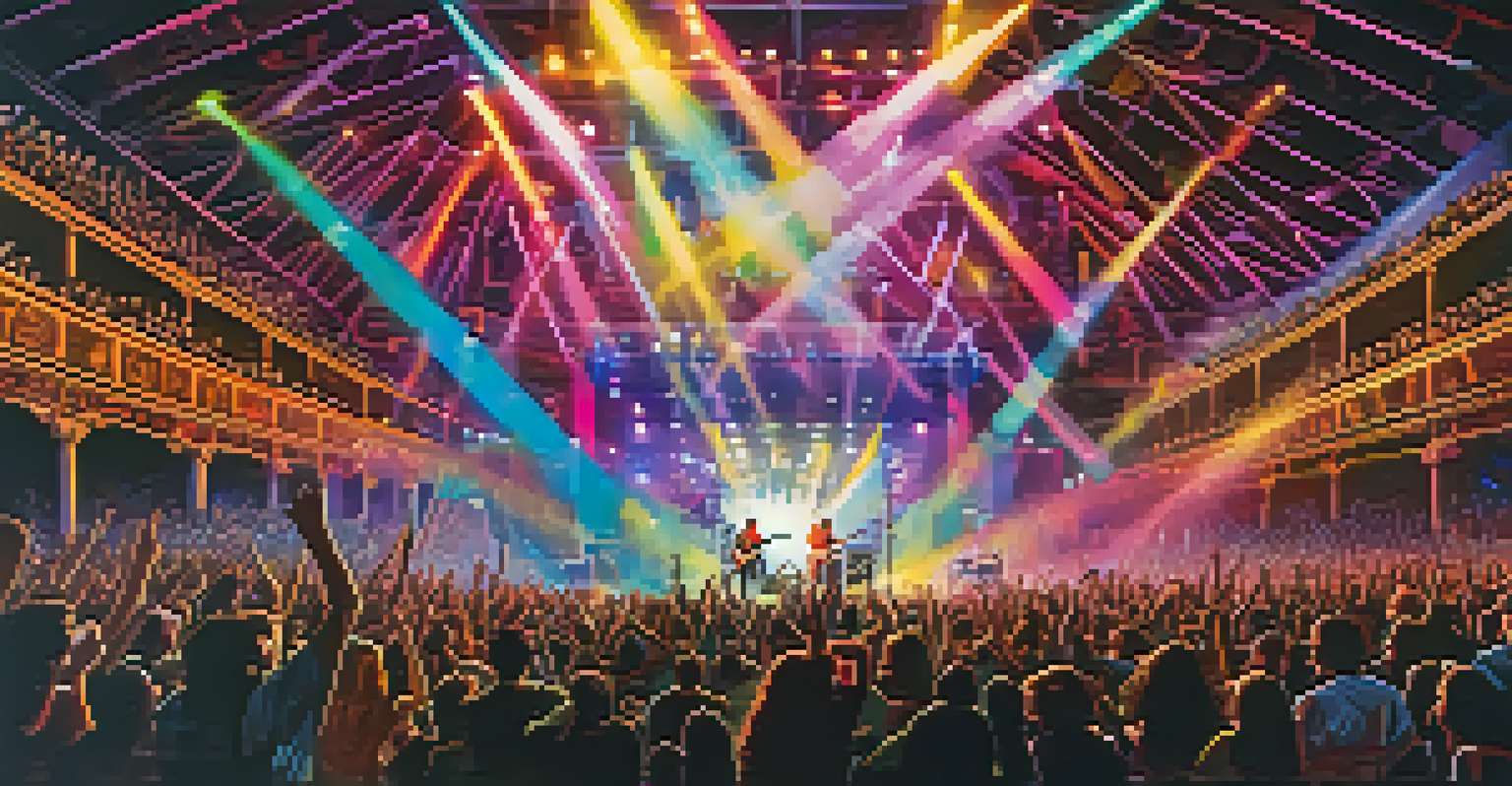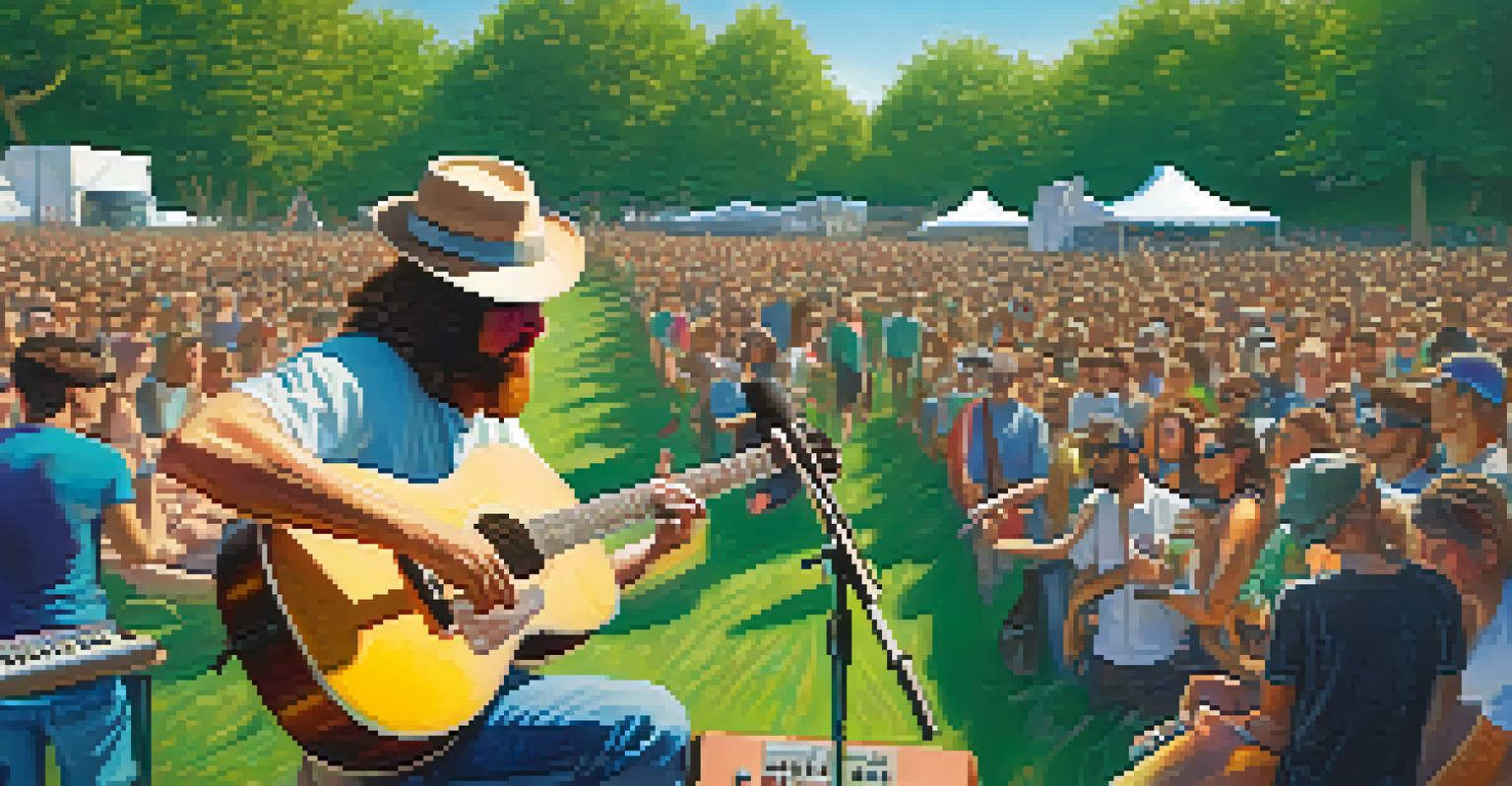The Popularity of Acoustic and Electric Music in Today’s Culture

Understanding Acoustic and Electric Music's Appeal
Acoustic music often evokes a sense of nostalgia, connecting listeners to simpler times. Its raw, unfiltered sound allows for a more intimate experience, often drawing audiences in with heartfelt lyrics and melodies. Electric music, on the other hand, brings energy and innovation, appealing to those who crave a more dynamic auditory experience.
Music can change the world because it can change people.
The distinction between acoustic and electric music isn't just about instruments; it's about the emotion and atmosphere each creates. Acoustic performances, often found in cozy coffee shops, invite quiet reflection and personal connection. In contrast, electric concerts in large venues unleash a wave of excitement, turning music into a communal celebration.
Both genres have carved out their spaces in today's cultural landscape, often overlapping in collaborations that blend their unique qualities. This fusion creates a diverse musical tapestry that resonates with a wide range of audiences, ensuring both styles thrive in modern society.
The Surge of Acoustic Music in Popular Culture
In recent years, acoustic music has seen a resurgence in popularity, fueled by social media platforms that highlight emerging artists. With the rise of acoustic covers on platforms like YouTube, traditional songs are reimagined, offering fresh interpretations that resonate with younger audiences. This trend has made acoustic music more accessible, allowing listeners to discover new talents in an intimate format.

Events like open mic nights and acoustic festivals have also contributed to this trend, fostering a sense of community among musicians and fans alike. These gatherings not only celebrate the craft of songwriting but also create spaces where stories and emotions can be shared. The warmth of acoustic performances often makes them feel like personal conversations, drawing crowds that seek genuine connection.
Acoustic Music's Resurgence
Acoustic music's popularity has grown due to social media and community events that foster genuine connections.
Moreover, the simplicity of acoustic music makes it a perfect backdrop for various settings, from romantic dinners to cozy gatherings. This versatility has led to its increased use in advertisements, films, and social media content, further embedding acoustic sounds into the fabric of modern culture.
Electric Music's Dominance in the Digital Age
Electric music, characterized by its vibrant soundscapes and technological innovation, has dominated the charts for decades. With genres like EDM, pop, and rock relying heavily on electronic elements, it's no wonder that electric music resonates with today's digitally-savvy audience. The pulsating beats and synthesized sounds create an exhilarating experience that captivates listeners globally.
Without music, life would be a mistake.
Streaming services have played a significant role in the popularity of electric music, allowing fans to access a vast library of tracks anytime, anywhere. Playlists curated for workouts, parties, and even relaxation often feature electric tunes, showcasing its versatility. This accessibility has allowed electric artists to reach broader audiences, crossing geographical and cultural boundaries.
Moreover, electric music's integration into the realms of video games and virtual reality has introduced it to new generations. Gamers often associate their favorite in-game moments with electric soundtracks, solidifying its place in modern entertainment. This fusion of music with technology ensures that electric sounds remain a driving force in contemporary culture.
The Role of Technology in Music Creation
The evolution of technology has transformed how both acoustic and electric music are created and consumed. For acoustic musicians, tools like digital recording equipment and online collaboration platforms have made it easier to produce high-quality music while maintaining an authentic feel. This democratization of music production means that anyone with a passion can share their sound with the world.
On the electric side, advancements in software and synthesizers have allowed artists to experiment with sounds in ways previously unimaginable. Music producers can manipulate audio to create entirely new genres, pushing the boundaries of creativity. This technological innovation not only enhances the listening experience but also encourages collaboration across genres.
Electric Music's Digital Dominance
Electric music thrives in the digital age, driven by streaming services and its integration into gaming and virtual reality.
As technology continues to evolve, we can expect both acoustic and electric musicians to find new ways to connect with audiences. Whether through virtual concerts or interactive music experiences, the integration of tech into music will only deepen the relationship between artists and fans.
Cultural Influences Shaping Music Trends
Cultural movements and societal changes heavily influence music trends, shaping how acoustic and electric genres evolve. For instance, the rise of environmental consciousness has led many artists to adopt acoustic sounds, which resonate with themes of nature and simplicity. This shift not only reflects a desire for authenticity but also connects music with broader social movements.
Conversely, electric music often mirrors technological advancements and urban culture. The fast-paced rhythm of city life is well-captured in electric beats, appealing to those who thrive on energy and excitement. As artists draw inspiration from their environments, both genres continue to evolve, creating a rich musical dialogue that reflects contemporary society.
Moreover, collaborations across genres highlight how cultural influences can shape individual styles. When acoustic artists team up with electronic producers, they create innovative sounds that resonate with diverse audiences. This blending of styles showcases the adaptability of music in responding to cultural shifts and trends.
The Impact of Live Performances on Music Popularity
Live performances play a crucial role in the popularity of both acoustic and electric music. There's something magical about experiencing music in person, where the energy of the crowd and the artist creates an unforgettable atmosphere. Acoustic shows often feel like intimate gatherings, while electric concerts can transform into massive celebrations of sound and light, captivating audiences of all ages.
The rise of music festivals has further amplified the appeal of both genres, providing platforms for artists to showcase their talents. These events allow fans to discover new sounds while enjoying a diverse lineup, often featuring both acoustic and electric performances. As audiences immerse themselves in these experiences, they forge connections with artists and fellow fans, creating lasting memories.
Technology Shapes Music Creation
Advancements in technology empower both acoustic and electric artists to innovate and collaborate, enhancing the music experience.
Additionally, the shift toward virtual concerts during the pandemic highlighted the importance of live music experiences. Artists quickly adapted, using technology to connect with fans through live streams, maintaining the excitement of performances despite physical distance. This adaptability has ensured that both acoustic and electric music remain vital components of the cultural landscape.
The Future of Acoustic and Electric Music in Culture
Looking ahead, the future of acoustic and electric music appears bright, with both genres continuing to evolve and influence one another. As artists experiment with new sounds and technologies, we can expect to see even more innovative collaborations that blur the lines between acoustic and electric. This fusion could lead to the emergence of new sub-genres, appealing to an even broader audience.
The ongoing digitization of music consumption also suggests that artists will continue to find novel ways to reach fans. With advancements in virtual reality and immersive experiences, music could become increasingly interactive, allowing listeners to engage with their favorite artists like never before. This evolution will likely enhance the emotional connection audiences feel toward music.

Ultimately, the enduring popularity of both acoustic and electric music is a testament to the universal language of sound. As society continues to change, so too will the music that reflects our shared experiences, ensuring that both genres remain integral to our cultural identity.